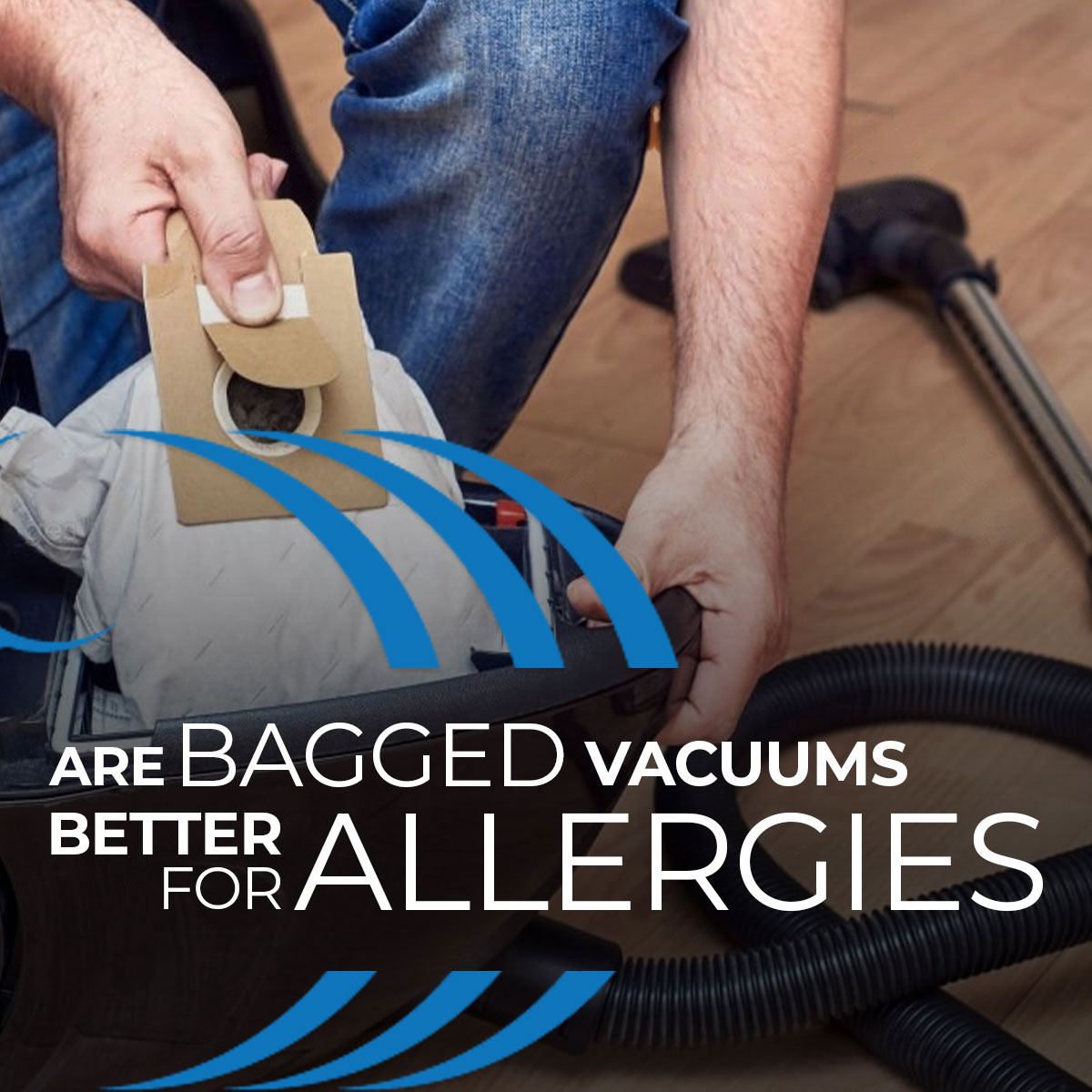
Boosting Productivity in Office Buildings with Central Vacuum
In today’s fast-paced work environment, maintaining a clean and organized office space is crucial for productivity. Office buildings often struggle with keeping their premises clean

Vacuuming is the easiest and most effective way to eliminate allergens, pet dander and other toxins that accumulate inside your home.
However, if you don’t use or maintain your vacuum cleaner properly, you run the risk of recirculating the vacuumed-up particles into your home. This is something that can happen pretty fast if vacuum bags aren’t used.
When a bagless vacuum is not carefully emptied, dust and allergens are released into the air and land on surfaces as well as possibly within your lungs. Additionally, this is a waste of all the time and energy you put into cleaning your house with the vacuum.
It’s a good thing vacuum bags exist to make vacuuming safer and more effective. They are better at capturing particles than dirt canisters, keeping allergens and irritants out of your home and are therefore highly recommended for people with asthma and allergies.
Bagged vacuums are beneficial for those who have allergies or asthma and those who don’t.
Here are some reasons why you should always use vacuum bags when using your vacuum cleaner.
In comparison to collection containers or dirt canisters, vacuum bags are more superior at trapping dust, dirt, debris and smaller particles when combined with a powerful vacuum suction and filter.
The allergens and pollutants you vacuumed up cannot re-enter your home or come in contact with yourself and your family because the gathered particles stay inside the vacuum bags. Additionally, this makes emptying and disposing of the vacuum cleaner bags safer and simpler for people with allergies and asthma.
Without a vacuum bag, dust, dirt, and other debris can collect within your vacuum cleaner, affecting its performance and causing its motor to overheat. However, this can all be avoided with the use of a vacuum bag and filter.
With a bagged vacuum, you won’t have to worry about your power unit getting clogged or damaged because all dirt and debris travel right to the bag. You also don’t have to clean your power unit or empty a collection container.
All you need to do to clean or empty your power unit is toss the bag and everything inside it in the trash.
Vacuum bags improve the air quality inside your home due to the superior filtration that it provides.
Without a vacuum bag, all the dust may enter the motor or out through the exhaust, contaminating the air in your garage, basement, and indoor spaces.
You may breathe in allergies and other irritants by emptying a full canister, which can swirl up dust and other particles into the air. This can result in respiratory diseases and lung issues, as well as start or worsen allergies and asthma.
A bagless vacuum needs regular cleaning and maintenance since it has no bag that will prevent dust and debris from clinging onto the power unit.
To avoid suction loss and clogging, most bagless vacuums need to be cleaned and emptied every three to six months. In some circumstances, it can even be necessary to clean the filters each time a container is emptied.
A vacuum bag should be replaced as soon as it reaches 75% of its capacity.
Allowing a bag to fill up past the advised level prevents new particles from entering and reduces a vacuum cleaner’s effectiveness and suction. To ensure that the vacuum is operating effectively, the bags must be changed frequently.
If a vacuum’s bag is full, do not keep using it because this could lead to blockages and overheating of the motor.
A HEPA filter or “high-efficiency particulate air” filter, is composed of very thin, interwoven plastic or fiberglass fibers that are designed to capture at least 99.7% of particles as small as 0.3 micrometers.
Highly recommended for those who suffer from allergies or asthma, HEPA filters, while paired with vacuum bags, provide superior air filtration that captures 100% of dust, debris, pollen, pet dander, bacteria, irritants and other particles that are invisible to the naked eye.
When purchasing HEPA filters, be mindful of HEPA-type filters that look like authentic HEPA filters, but fall short in terms of functionality or quality. Many HEPA-type filters can only capture between 85% and 95% of all particles. That percentage may decrease for particles smaller than 1 micron in size.
Look for the serial number and test results printed on the filter to verify whether it is a true HEPA filter or a HEPA-type filter. If a HEPA filter has a serial number and the test results are 99.97% at 0.3 microns, it is authentic.
Regular cleaning of a vacuum filter is necessary to ensure that it continues to collect more dirt and enhance the quality of air inside your home.
Depending on how frequently you use your vacuum, vacuum filters should be cleaned every three months and replaced every six months. With moderate use, a filter can last for two to three years.
If your filter is made of plastic or foam, you can thoroughly clean it by rinsing it with water. A foam filter should be set aside to completely dry before being reinserted into the vacuum. It typically needs around 24 hours to dry.
If your filter is made of cloth or paper, you can completely enclose it in a garbage bag, hold the lower half of the filter, and shake it until the dirt and debris fall inside the bag.
– When it comes to capturing allergens like pet dander and pollen, vacuum bags with HEPA filtration perform far better than dirt canisters.
– Bagged vacuums are more efficient than bagless ones and they ensure that the disposing of collected particles is safe and hygienic.
-They enhance the air quality inside a home.
-They are more functional and durable than bagless vacuums.
-Without any filtering, emptying a collecting container will stir up its contents into the air, exposing you to toxins and allergens.
-Not using a vacuum bag can cause dust and debris to accumulate inside the power unit and motor, causing damage and overheating.

In today’s fast-paced work environment, maintaining a clean and organized office space is crucial for productivity. Office buildings often struggle with keeping their premises clean

Central vacuums in animal shelters & vet clinic: Explore how these systems boost hygiene, efficiency, and air quality.

In the world of home entertainment, a home theater is a luxury that many homeowners dream of. It’s an immersive experience that brings the magic

A central vacuum system is a significant investment that promises convenience, powerful suction, and improved indoor air quality. However, choosing the right central vacuum hose
Our home automation products are at the forefront of technology, offering a blend of convenience, security, and efficiency. As a Homewave dealer, you’ll be part of a network transforming homes into smart, futuristic spaces.
Embark on this rewarding journey with us and leverage the power of innovative technology.
Please fill out this form and become a Homewave Dealer.